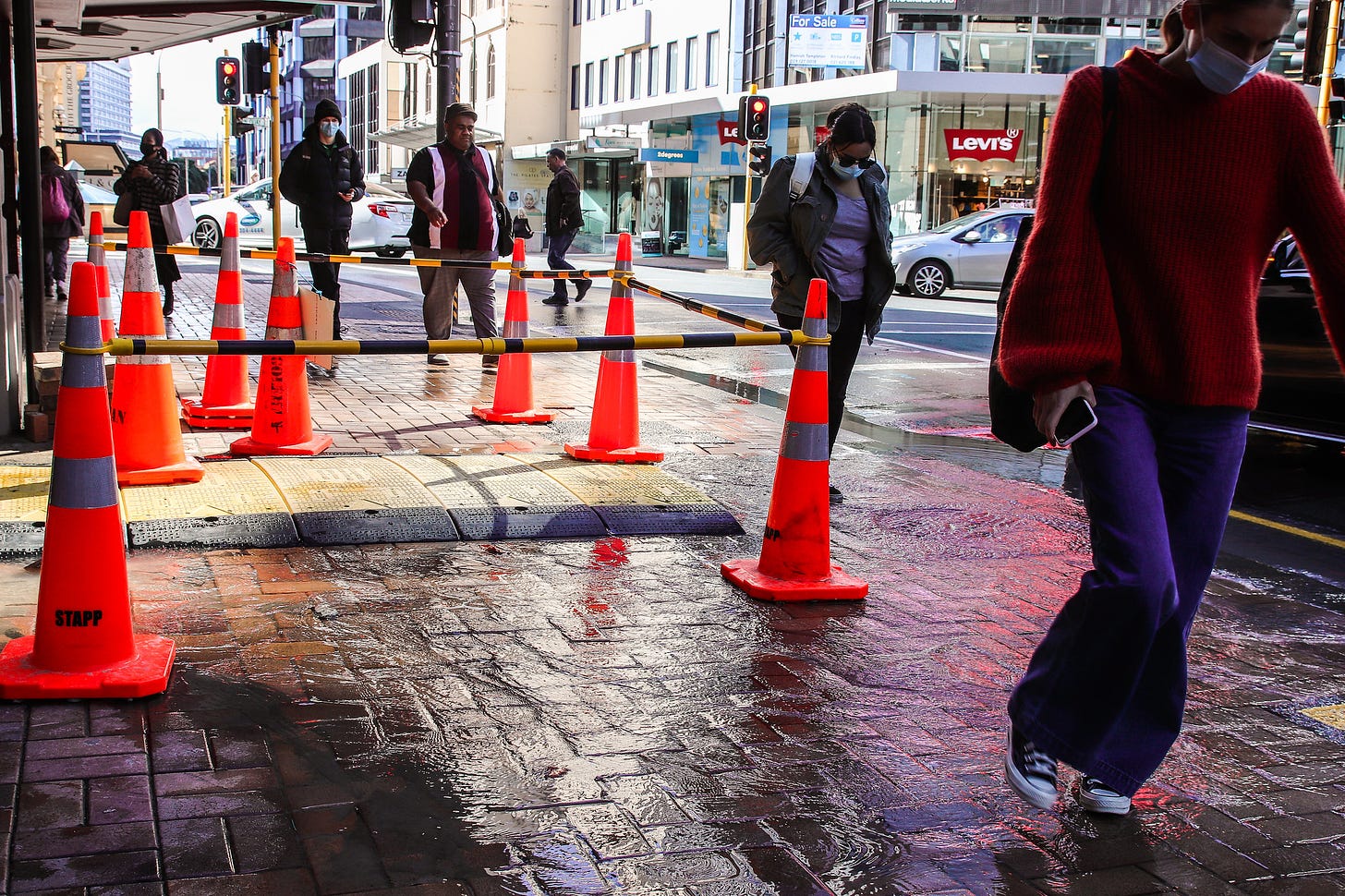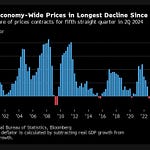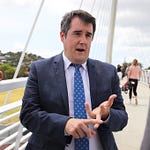
TLDR: National has confirmed it will repeal Three Waters legislation and disestablish the four new water entities set up under the Labour Government’s reforms.
National would replace them with a new water regulator and the hope councils will voluntarily charge for water and create their own larger entities able to borrow in their own right to pay for infrastructure.
In effect, National wants to push the political pain of applying water charges and extra borrowing down to council level, but create a new centralised bureaucracy that tries to force local government to plan and invest properly without ‘overcharging’ for water. The end result is denials, delays, deflections and dissembling by local and central Government politicians that means not enough infrastructure is built for way too many people, without voters being able to pin the blame on any one politician at any one time. That’s little different from Labour’s ‘plan’.
National announced its policy on Sunday and Local Government Spokesman Simon Watts pledged in this Q+A interview that council rates would not increase relative to the Three Waters plans or the status quo. National made no commitment to increase central Government funding for water and said central Government would instead use a new regulator in the Commerce Commission to assess whether councils were adequately planning for and funding their networks to cater for growth.
In my view, National’s approach retains many of the magical thought processes of the current Labour Government ‘plan’ for the local water and transport infrastructure needed to cope with the fastest population growth in the developed world. Effectively, there is no ‘plan’ or even an acknowledgement of how fast our population could or should grow, or a realistic assessment of the existing deficits, the future needs or the real requirements to fund that infrastructure through charges, taxes and Crown debt.
Labour’s Three Waters policy suffers from many of the same flaws. It pushes those politically difficult decisions about charges into non-elected bodies designed to borrow from ‘structurally-separated’ balance sheets that create the impression the debt is not the responsibility of either taxpayers or ratepayers. Neither is true, and the fiction is a non-fiction from the point of view of ratings agencies and bond investors. They see the central Government as ultimately guaranteeing the debt anyway and are happy to charge a hefty premium of around 50 basis points to allow politicians to say the debt is not on any public balance sheet. Over time, that represents billions of dollars in extra cost to protect a political fudge that ratings agencies and bond investors see right through anyway.
The irony of the ‘balance sheet separation’ idea is that it was designed in an era when both parties aligned with a gross debt ceiling that excluded such vehicles from their calculations. Since then, the Labour Government has adopted a ‘net debt’ ceiling that includes these state-backed vehicles anyway. That’s the reason why last year the Government quietly decided to wind up Kainga Ora’s own ‘off-balance-sheet’ vehicle’ late last year and resume borrowing via the Crown’s vanilla borrowing programme. That is the most efficient and simple and liquid way to fund public infrastructure.
The ‘plan’ from both sides of politics is to:
not acknowledge the likely scale of the population growth and the need for repairs and new infrastructure to provide enough housing, clean water and necessary emissions reductions;
not address the scale of costs that have to be born both publicly and through demand-management-style water and congestion charges to effectively cater for growth; and,
to deflect all the inevitable political pain of water charges and higher debt all down to existing councils while also applying centralised control through an at-arms-length bureaucracy that allows central Government politicians to claim councils are being policed.
This bi-partisan magical thinking will inevitably mean the status quo of under-investment and constant pleas to limit rates growth will ensure nowhere near enough capacity for population growth is built.
That suits both main parties and most median voters because it means they get continued low taxes and rates (or at least lower than needed to fund the necessary infrastructure), and continued housing shortages that can be weaponised in ever-rising residential land prices once fast population growth and falling interest rates are added back into the mix.
‘We can have it all. Until we can’t. And I’ll be gone by then’
The guts of all this is that both National and Labour do not want to increase taxes or debt to fund the infrastructure growth that will be needed for the population growth they will both unleash with high-migration population policies that go unacknowledged and unplanned.
From a home-owner point of view, it is a beautifully magical accident of bipartisanship. They keep rates and taxes low to ensure low interest rates and insufficient residential land supply, which in turn generates more leveraged and untaxed gains in residential land values.
From the point of view of renters the maintenance of the status quo leaves little choice but to embrace the hope they can marry into land wealth or try to create their own by living in the remotest towns and cities, or get a good offer to live and work in Australia, particularly once Australia grants them full residency rights.
From the point of view of those employers who want to keep their local (renting) employees here, they will have to continually churn their workforces with temporary workers from overseas. Like everyone else, these business owners and those employees hiring staff into companies they don’t own will know the easiest way to get ahead personally is to funnel their savings into leveraged residential land.
The end result is a low productivity, low wage, low infrastructure, low tax and low interest rate economy set up for the main purpose in the financial and social lives of median-voting home-owners: to make leveraged and untaxed gains on residential land values.
So how does this story end?
Nothing really changes until both parties (and median voters) address the elephants in the room of:
not taxing gains in owner-occupied land values;
not charging enough for use of public roads and water infrastructure; and,
not having high-enough taxes and public debt to fund 1-2% per year population growth.
Continuing to think that somehow Aotearoa can keep growing its population quickly while at the same time improving water quality and reducing climate emissions without changing this economic ‘model’ of low taxes and low investment (in anything other than residential land) is to simply keep thinking magically.
The failure of the model only becomes apparent when:
the children of these median-voting home owners overwhelm their parents with pleas for deposits to buy their own homes;
these home-owning median voters become grandparents who have to watch their own grandkids grow up via WhatsApp and occasional flying visits to Australia and other higher-wage economies (covid permitting); or,
those at the bottom of the pile who do not have the skills or resources to emigrate become increasingly expensive and difficult for the home owners to live with.
That’s because, for now, the health, education and justice systems are ultimately paid for by those mugs who still pay PAYE income taxes and GST, rather than structuring their earnings and wealth into mostly untaxed assets.
In my view, the model only becomes politically unsustainable once the pain of
watching grandkids grow up overseas; and,
paying taxes for high health, justice and education costs of renting kids;
overcomes the pain of
choosing instead to have higher taxes, congestion and water charges and higher public debt; and,
slightly higher interest rates and lower land values.
Everything always comes back to our failure to tax gains on residential land values. Without addressing it, Aotearoa cannot move forward. It can only slide even more into widening inequality and the erosion of our social cohesion.
Ka kite ano
Bernard
PS: I’ve made this one completely public from the start to get it out there into the public discussion. I can do this due to the support of paying subscribers.













Share this post